- Home / Catalog / Facial Equipment / Teeth Whitening Machines
Teeth Whitening Equipment
Nothing found
Professional Teeth Whitening Equipment
Smiling is never a problem, but most people find it difficult to smile with yellowish discoloration waving “hello” to the crowd. Relax, this problem most of the time has nothing to do with hygiene. Teeth discoloration can be attributed to being inherited and acquired. Some people inherited thicker, whiter enamel and some have more transparent enamel. This type of problem in comparison to discoloration caused by lifestyle is usually resistant to commercial whitener and toothpaste. A trip to your dentist and specialist equipped with teeth whitening machineries should be added to your confidence-booster list.
What Is Teeth Whitening Equipment?
Most consumers have been using commercial products including teeth whitening toothpaste, mouth rinse, organic solutions, and other chemicals as their getaway to teeth discoloration. As consumers have high demand for these products, so do many of the companies who try to innovate for faster, and more efficient machines. Teeth whitening equipment are machineries and an innovation combined with the commonly used chemicals that are proven to have an effect on the common problem: teeth discoloration. Most of the teeth whitening equipment range from those that use LED light and moderated chemicals to modern laser whitening options.
What Benefits Your Clients Can Get From Teeth Whitening Machines?
Teeth whitening machines have faster promising results in less time. It is conducted by a reputable dentist with proper assistance compared to the OTC whitening or bleaching commercial product.
Types Of Teeth Whitening Systems
The American Academy of Cosmetic Dentistry stated that, 5 types of Whitening System exist. These are whitening toothpastes, OTC whitening strips and gels, whitening rinses, tray-based teeth whiteners and in-office whitening.
Whitening Toothpaste
This system is readily available and the most commonly known type. If you are not having this type of research on this topic, this and the rinses probably is what you have been exposed to since we were a kid as a whitening method. This is also the least effective way to lighten your teeth one or two shades only. Among them, this can be performed even without professional supervision. Compared to other regular toothpaste, this type contains a high amount of detergent and bleaching chemicals to aid in removing stains.
OTC Whitening Strips and Gels
As unfamiliar as the other type of system. This has been already circulating with teeth whitening fans since 1980. This can be done without professional supervision. In comparison with the toothpaste and rinses’ efficiency, these strips and gels yield faster results in days to weeks.
A teeth whitening strip is some kind of a foldable plastic strip that contains the chemical “peroxide” that has a function of bleaching the stains of your teeth. Different manufacturers have different instructions and frequency of usage. Similar to whitening toothpaste, these products can lighten the teeth by 1 to 2 shades too. Results may also vary depending on a manufacturer, some products promise to remove 1 year worth of stain in just 1 hour. Most instructions indicate that this product should be used twice a day for 14 days.
While whitening gel may work with the same frequency of usage and result, this type is applied using a small brush that is spread to the surface of the teeth.
Whitening Rinse
This type is one of the most commonly used whitening types, similar to whitening toothpaste. The rinse may be composed of hydrogen peroxide, and other peroxides that react with the “chromogens” or the discoloration/stain brought by several factors. The efficiency takes 3 months and a 1 to shade lightening of the teeth. Instructions may vary depending on the manufacturer of the rinses.
Tray-Based Teeth Whiteners
Stay with this article as you will be awed by the improvement of teeth whitening machines. This method may also vary on the result and the frequency of usage depending on the manufacturer. As the name indicates this method uses a tray that fits the buccal of the mouth, the trays contain carbamide peroxide and other whitening gels. The tray is worn for 2 to 4 hours everyday or may opt to be inserted in the mouth overnight. Before this system could only be seen in the office of the professionals, but now a lot of manufacturers have already succeeded in making an over-the-counter version. Whitening efficiency of this system is as fast as days. A noticeable 1 to 2 shades lighter will already be noticeable in your smile.
In-Office Whitening
Behold, this system is also known as the “trip to the dentist”. This is no ordinary trip as tooth extraction and cleaning. As this system is in tandem with chemical and sophisticated equipment, it also yields the fastest result. To compare this with other systems that are only safe if you correctly follow the instructions hence, could be very risky if not. This type of system is the most efficient, quickest and safest one as this is a professionally assisted system. The professional moderates and customized the amount of bleaching agent that is brushed to your teeth. Not only bleaching agents are used, but this system is performed with advanced machinery like lasers. Tooth whitening can be seen in just 30 to 60 seconds and the more the procedure is done the lighter the teeth becomes.
Benefits Of Teeth Whitening
A report from Valet Magazin(12/17), 58% of the study’s participants were more likely to be hired, and 53% received larger salary offers after teeth had been whitened.
Teeth whitening has built a stronger community since commercially available products that involve esthetics dominate in the market. This is safe and beneficial to a lot of people who are boosting their self-esteem.This is the most common cosmetic dental treatment requested, and performed in a lot of clinics. This does not only produce beautiful, gleaming teeth but also boost confidence to the clients. A lot more clients have been following this trend of teeth whitening but a proper treatment planning with objectives should be conducted prior to engaging in any bleaching protocol.
How Does Teeth Whitening Machines Work?
There have been a lot of machines that are used by different individuals who wished to dramatically whiten their teeth. The last two systems stated above have been using different types of machines but almost the same procedure.
These are the tray-based teeth whitening and the in-office teeth whitening. As stated above tray-based have been readily available over the counter nowadays. Tray based before has been commonly found in offices, together with the lasers and other sophisticated equipment.
Teeth Whitening Treatment
What Is Teeth Whitening Treatment?
Teeth whitening treatment is the most common cosmetic dental procedure that is less invasive for the client’s that are seeking to boost their confidence with enhanced and lightened teeth. It is defined as any process that lightens the color of a tooth. This can be done using different systems and procedure; from physical removal of the stain or the causes of discoloration to chemicals that serves as a bleaching agents to remove the chromogens or the discolorations.
Who Needs Teeth Whitening Treatment?
A client with tooth discoloration may not just be caused by hygiene or lifestyle, most clients have inherited the discoloration in their genes. Clients with a healthy smile and no further restorations in their crown, bridges or veneers can be a candidate for professional teeth whitening procedures. The dentist will advise you if a teeth whitening is right for your teeth.
Does Teeth Whitening Really Work?
Yes, teeth whitening works depending on the system being used and the case of the client’s teeth. That is why it is also practical to visit a professional to assess and customize a procedure that will suit the teeth’s needs. A very important step for the OTC teeth whitening product to be effective and safe is to follow the manual’s instructions. Dentist says it works as long as you are guided and you don’t get carried away. Keep in mind that this works on a case to case basis as every teeth is different and the efficacy of the system is dependent on the cause.
Teeth Whitening Results
Among the systems discussed above, the in-officed type has the most promising result. With the use of technology like LED lights and laser, a 6-8 shades whiter is achievable in just a day. Unlike the gradual effect of other DIY and OTC whitening agent that yields 1 to 2 shades after months to years of usage.
How Often to Get Teeth Whitening Treatment?
This depends on the system being used. For teeth whitening toothpaste and rinses, it takes 3 months or more depending on how religious the client is on following the manual. For strips and gels it would take weeks. For trays, it usually takes days, and lastly, for in-office systems the clients only need to render minutes to hours before the whitening becomes noticeable.
Some in-office systems are using LED lights, which according to research, speeds up the chemical reactions of the bleaching agents on removing the stains from the teeth. Some clinics that use LED lights can lighten teeth 6-8 shades during just ONE single session.
What Are The Side Effects Of Teeth Whitening? Does it hurt?
Since Teeth whitening is a cosmetic, non-invasive procedure, it does not hurt. The downside is that the bleaching product may cause damage to the enamel and cause problematic oral issues. This is the main reason why it is impractical to use do-it-yourself bleaching products. Bleaching itself according to research may cause the following side effect to its extreme:
- Gum irritation - some patients experience irritation right after the whitening, but this side effect wears off after the teeth whitening treatment has been stopped.
- Enamel damage
- Tooth sensitivity - the dentist may suggest the use of products with sodium fluoride gel and potassium nitrate
- Tooth surface roughening and softening
- Increased potential for demineralization
- Degradation and color change of dental restorations - whitening may not be the best option with those clients that have colored dental restorations.
- Gingival inflammations - this with tooth sensitivity is the common adverse effect.
Though the assisted teeth whitening in the in-office system is advised and monitored by the professional to customize the correct percentage that would fit your teeth and the need to whiten the teeth, without causing extreme side effects.
How Many Teeth Whitening Treatments are Needed?
This depends on the case of the teeth and the system being used. The average whitening treatment using a LED light in-office teeth whitening for example, yields a 6-8 shades lighter in just a day.
How Long Does It Take To See Results From Teeth Whitening?
When used twice a day, whitening toothpaste can take from two to six weeks to make teeth appear whiter. Whitening toothpastes that contain blue covarine can have an immediate effect. Although whitening toothpastes are typically designed to maximize cleaning and minimize wear on tooth enamel, be careful to follow manufacturer recommendations.
What Is The After-Care For Teeth Whitening?
The white teeth does not mean a client can already indulge themselves to whatever food or lifestyle they want. A client should put in mind that they should avoid acidic or dark-colored foods and beverages. These may include, but not limited to fruit juices, alcohol, soft drinks, coffee and tea. Food with a lot of colorant should be on the top list of your “NOT-TO”, examples are ketchup and chocolates. A rule of the thumb is, if the food or drinks will stain your white clothes, it will also cause discoloration on your freshly done teeth.
How Long Do Teeth Whitening Results Last?
A teeth whitening usually stays for months and 3 years to be the longest. That is why it is important to maintain and follow the after care instructions advised by the dentist.
Can You Have Teeth Whitening After Botox?
Some teeth whitening like LED light does not have an effect on botox. But according to the protocol imposed by those who have botox, dental works should be avoided two weeks prior and 2 weeks after the procedure
Teeth Whitening Benefits
Teeth whitening benefits mostly the confidence level of the clients. As the standard for teeth color portrayed by the popularity of the media imposed that the whiter the teeth the more beautiful the person is. Hence a client should be skeptical with the type of commercial product they will be using, as there are also consequences and side effect.
Teeth Whitening Recovery Time
The recovery from gum irritation and gum and tooth sensitivity usually subsides for 24 to 72 hours. But a patient should keep in mind that an after care on diet and lifestyle should be followed
Teeth Whitening Pros And Cons
An in-office based system is fast, precise, efficient and non-invasive. Also the bleaching percentage is customized according to the teeth’s need. Additionally, the dentist will advise you if teeth whitening is best for you. The dentist will apply either a gel to the gum tissue or use a rubber shield (which slides over the teeth) prior to treatment to protect your gums and oral cavities from the effects of the bleaching. Over-the-counter products don't provide these extra protective measures. The disadvantage of this system is that it is more expensive, and a gradual whitening according to studies does not last long and may promote tooth sensitivity.
In comparison a home-based whitening using over-the-counter products such as strips, toothpaste, gel, rinses and some trays may be cost-effective as some trays can be reused over the years. Another advantage is that it whitens the teeth gradually that yield to a longer effect. The disadvantage for this procedure is it takes a lot of time, and some products can have a higher percentage of bleaching that is not suitable for the client’s teeth.
Teeth Whitening Treatment Before & After
Each system has a different effect on the patient’s teeth. This example of before and after is achieved by using Zoom system, a type of an in-office system.
Teeth Whitening Cost in the US
When talking about the commercial products it can go as much as 20 USD to 80 USD. While an in-office system with a professional dentist may cost $450-650 for a two-three hour visit (on average) for a light and laser system, but this will give you immediate results.
Quoting for treatment varies on the clinical and the case of the teeth.
What To Expect After Teeth Whitening Treatment?
Depending on the system use. A home-based treatment can be controlled by the client. But an in-office whitening using LED light and laser system may improve the shade of the teeth 6-8 shades lighter. Expect side effects, most of them subsides after the whitening process.
Are Teeth Whitening Results Permanent?
No, teeth whitening depends on the case of the teeth. Some last for only a few months, while some extend upto 3 years. Staining will continue to occur even if the changes in the appearance in your teeth are surreal. Make sure that you do the after care statements above, and brush your teeth twice a day.
What Are The Other Names Of Teeth Whitening?
Tooth bleaching is the other name of teeth whitening.
Performing Teeth Whitening Treatment
Who Can Perform Teeth Whitening Treatment
Teeth whitening is a dental procedure and can only be performed by a professional dentist or another regulated dental professional, such as dental hygienist or dental therapist, under the prescription of a dentist.
Beware of some beauty salons that may offer this type of procedure for a very low amount. This is illegal without a dental professional present in the area. Moreover, this might be a risk to your oral health.
There are also OTC teeth whitening but unlike the in-office system, the client may not be checked for the most suitable treatment needed by their teeth.
How to Use a Teeth Whitening Machine?
Among the machines used in teeth whitening trays are the most convenient to use. The trays that are used may contain carbamide peroxide and other whitening gels. The tray is worn for 2 to 4 hours everyday or may opt to be inserted in the mouth overnight. Whitening efficiency of this system is as fast as days.
While the in-office machine that uses light and laser is more complicated than trays. LED light is usually used instead of UV as UV is carcinogenic. Light-emitting diodes release a single color of light on the visible light spectrum when exposed to electricity.
How To Perform Teeth Whitening?
Teeth whitening can be a minutes to hours process specially if we are going to talk about the in-office based whitening. A common procedure done in the tray-based and in-office based systems is that professional assistance and monitoring is performed by the dentist to ensure that the procedure will yield a highly effective whitening plan customized to the client’s needs. A clinical exam is requested before starting a tooth whitening or bleaching procedure. Radiographs and other screening and diagnostic tests are requested. This additional test can diagnose the cause of the tooth discoloration. Whether it is intrinsic (genetic) or extrinsic (environmental and lifestyle) caused.
Once the examinations and monitoring is done the professional will proceed on applying the solutions to your teeth. Whitening can be accomplished by physical or chemical removal of the stains. Chemical removal tandem with sophisticated machines are the most commonly performed procedure. The active ingredients of the gels and products applied to your teeth is hydrogen peroxide (H2O2) which is delivered as hydrogen peroxide or carbamide peroxide. Carbamide peroxide is a stable complex that breaks down in contact with water to release hydrogen peroxide. Because carbamide peroxide releases hydrogen peroxide the chemistry of most tooth whitening is that of hydrogen peroxide.
After applying the chemicals, the professional will apply the tray (if tray based) or proceed with the light or laser treatment.
Teeth Whitening Treatment Protocol
Before doing any whitening treatment whether it is home-based or office-based, a dental consultation should first be done to ensure that the whitening system or whitening itself is right for your teeth. A patient must note that only the natural teeth are affected by the procedure and not the restorations and there could be a shade difference between the freshly whitened teeth and the restorations. A dental consultation should advise and discuss to the patient whether or not teeth whitening is right for the client. A bleaching of teeth of a young client should always be under the supervision of an adult. Moreover, here are some policies that has been encourage by the American Academy of Pediatric Dentistry that should be considered in the consultation:
- The judicious use of bleaching for vital and nonvital teeth.
- Patients to consult their dentists to determine appropriate methods for and the timing of dental whitening within the context of an individualized, comprehensive, and sequenced treatment plan.
- Dental professionals and consumers to consider side effects when contemplating dental bleaching for child and adolescent patients.
- Further research of dental whitening agents in children
Teeth Whitening Treatment Steps
A dental examination should be given first to the client just like any other dentition. This should involve the dental history, the possible cause of discoloration, allergies to the solution that will be used, like bleaching material and other history of tooth disease and sensitivity. An example of the monitoring is by checking if there is a need to refresh an old dental restoration or if there is a need to treat an issue, say for example cavities. This is done before the treatment to ensure that the results are in accordance with the client’s needs. Huge factors like patient dentition affect the safe provision of the procedure and the whitening success. For the in-office based type, a peroxide gel or a bleaching agent is added. After minutes a light and laser procedure will be done to increase the speed of chemical reaction. Some systems like Zoom and Lumibrite achieve great results even without light and laser. Patients with stains that are hard to remove are advised to return for 1 or more additional bleaching sessions or may be advised to continue with the procedure at home.
How Long To Wait Between Teeth Whitening Treatments?
Overtreatment using bleaching agents has been shown to harm tooth structure. This may lead to gum and tooth problems. Frequency of treatments, may have a drastic effect if done dramatically. In conclusion, it’s a good practice to return to the dentist for teeth whitening services once per quarter, or once every three months. As long as you practice the after care, the longer you it will take for your whitened teeth to have a regular dentist trip.
Teeth Whitening Treatment Areas
Teeth whitening is advised for people who have healthy and unrestored teeth and gums. Those with yellow tones on their teeth respond the best to the treatment. This cosmetic procedure is not recommended for everyone. It is best to visit and have a consultative check up with the dentist.
Teeth Whitening Treatment For Smoking Stains
Tobacco stains on teeth are stubborn to remove because they have occurred over years of smoking. Usually the stains have settled deep into the enamel, and penetrate to the outer layer of the dentin. Fortunately, these stains are not permanent and can be removed with professional teeth whitening and bleaching.
Teeth Whitening Treatment For Food and Drink stains
Food and beverage stain similar to smoking is an extrinsic discoloration that can be easily removed by home based and in-office teeth whitening. As these are also an after care measurement to make the freshly whitened teeth last.
Teeth Whitening Treatment For Decay
Before undergoing a teeth whitening a professional will first do a restoration on your teeth. Once your cavities are addressed, you can whiten your teeth. Patients should note that any restoration is not included in the improvement of color as the natural teeth. When performed at a professional dentist's office, you can expect your teeth to be anywhere from five to eight shades whiter.
Teeth Whitening Treatment For Medication
One of the most common drugs that causes stains is the antibiotic tetracycline. Like genetics, this is one of the intrinsic discolorations of the teeth. Since tetracycline stains tend to be dark and deep within the tooth, you will likely need a high concentration of bleaching agent to produce results. If you have tetracycline stains, in-office teeth whitening with a high concentration of peroxide can significantly lighten your teeth.
Teeth Whitening Treatment For Genetics
Professional teeth bleaching is often considered the first line of treatment for individuals with genetically inherited tooth discoloration. While store-bought whiteners don't usually provide satisfactory results, bleaching performed by a dentist can have good results that last a long time.
Teeth Whitening Machine Maintenance
Similar to other dental machineries. Teeth whitening machines of the in-office system should be maintained regularly. Cleaning, lubricating and sterilization of the handpiece should be performed regularly. Avoid spraying directly on the machines, instead you may use a cloth provided by the manufacturer or a linen to wipe the equipment. Continuous working time should also not be too long as some machines malfunction or overheat. Additionally, for safety protocol, cables should be properly placed to avoid hook damage to the machine. If machines are not used for a very long time, it should be run for testing.
Teeth Whitening Consumables/Expenses
For the in-office based system teeth whitening cost $450-650 for a two-three hour visit. Some teeth have stubborn stains that need a take home kit with bleaching agents like peroxide and carbamides and a mouthguard-like equipment. These may cost, an average, $250 to $400.
Teeth Whitening Training
According to The General Dental Council, the practice of teeth whitening involves applying and performing procedures designed to improve the appearance of teeth, therefore it is a ‘practice of dentistry’.
Only trained, qualified and registered dentists can perform teeth whitening procedures in-office. Additionally a dental hygienist and therapist can perform the procedure but with due supervision of a trained dentist.
Teeth Whitening Consent Form
A clinical exam is requested before starting a tooth whitening or bleaching procedure. Radiographs and other screening and diagnostic tests are requested. This additional test can diagnose the cause of the tooth discoloration. A dental examination involves dental history, the possible cause of discoloration, allergies to the solution that will be used, like bleaching material and other history of tooth disease and sensitivity. The patient should also be well-informed about the risk associated with tooth whitening.
Here is an example of an informed consent that a client may encounter when proceeding with teeth whitening from Dr. Thomas Kieferd website.
Benefits Of Teeth Whitening Machine For Your Spa Business
Teeth whitening machines in an in-office base will surely attract more dental cosmetic enthusiasts. Machines yield fast, safe and efficient results compared to just using OTC.
Instagram Hashtags for Teeth Whitening Procedure
#teethwhitening #teethcleaning #teethgoals #teethwhiteningkit #teethbleaching #smilemakeover #veneers
Summary
In conclusion to the long discussion above, of all the systems available for teeth whitening. The most effective and safest is the in-office based cleaning. Not only is it fast, the trained professionals will customize the treatment depending on the kind of stain that your teeth is facing. Though OTC and home-based products can be an alternative, a consultation with a professional would benefit the user. It is safe as long as the procedure is being followed religiously. Everyone has a different type of teeth, yellow or not, as long as you are happy and gaining confidence and being careful, you’ll never go wrong.
Reference:
- Thomas M. Kiefer, DMD. (2017, June 28). Your Dentist in Marathon, FL, and
Surrounding Areas Thomas M. Kiefer, DMD – Welcome to Our Practice. https://www.thomasmkieferdmd.com/ - American Academy of Pediatric Dentistry. Policy on the use of dental bleaching for child and adolescent patients. The Reference Manual of Pediatric Dentistry. Chicago, Ill.: American Academy of Pediatric Dentistry; 2021:116-9
- Teeth Whitening - Cost & Types. (2021). Sedation Dentistry. https://www.drarocha.com/teeth-whitening-plantation.html
- Carey C. M. (2014). Tooth whitening: what we now know. The journal of evidence-based dental practice, 14 Suppl, 70–76. https://doi.org/10.1016/j.jebdp.2014.02.006


















Connecticut, Delaware, Florida, Georgia, Hawaii, Idaho, Illinois, Indiana, Iowa, Kansas, Kentucky, Louisiana, Maine, Maryland, Massachusetts, Michigan, Minnesota, Mississippi, Missouri, Montana, Nebraska, Nevada, New Hampshire, New Jersey, New Mexico, New York, North Carolina, North Dakota, Ohio, Oklahoma, Oregon, Pennsylvania, Rhode Island, South Carolina, South Dakota, Tennessee, Texas, Utah, Vermont, Virginia, Washington, West Virginia, Wisconsin, Wyoming















